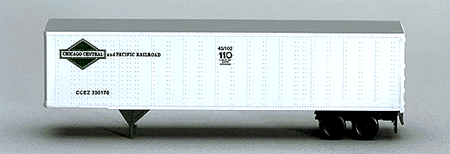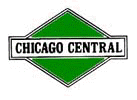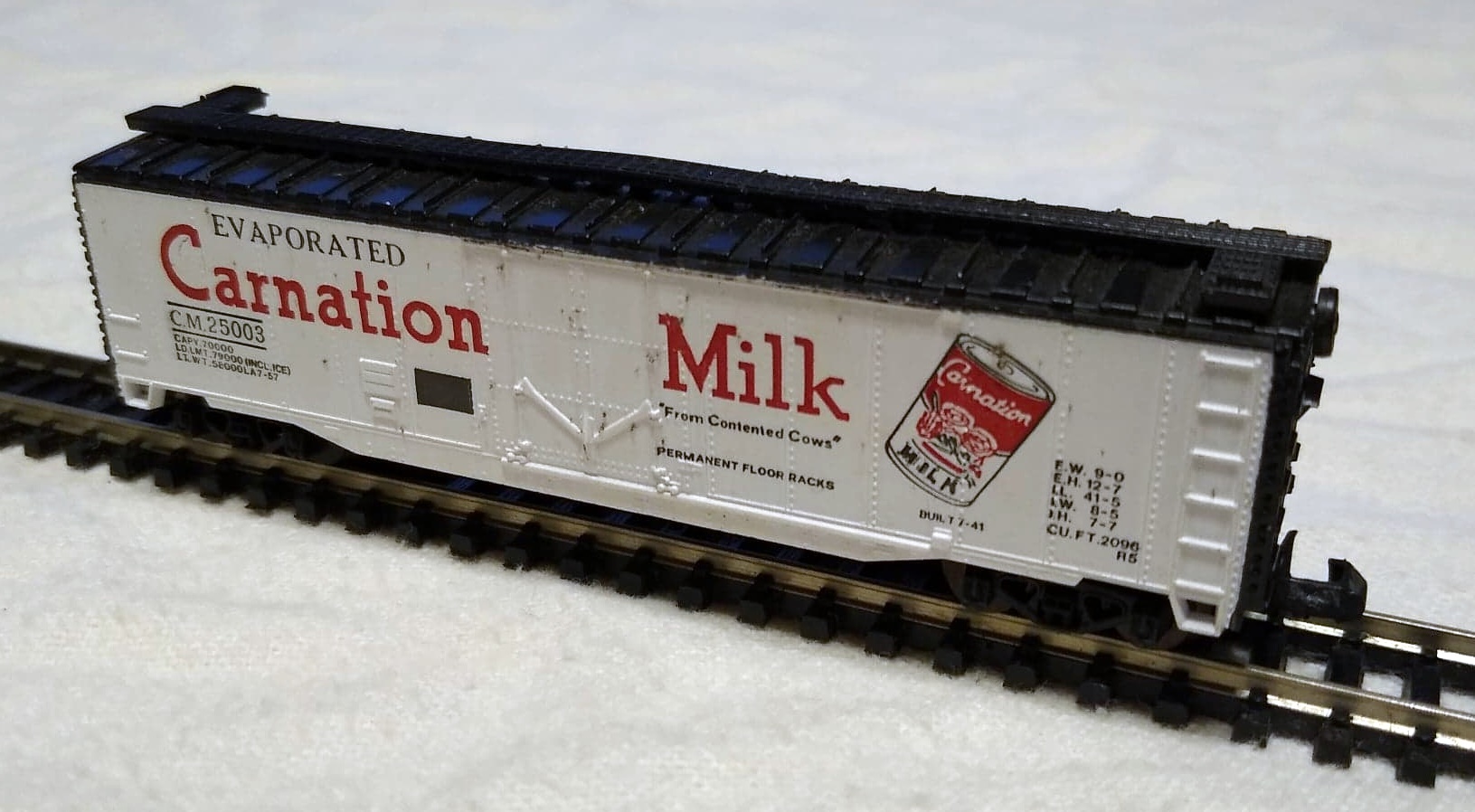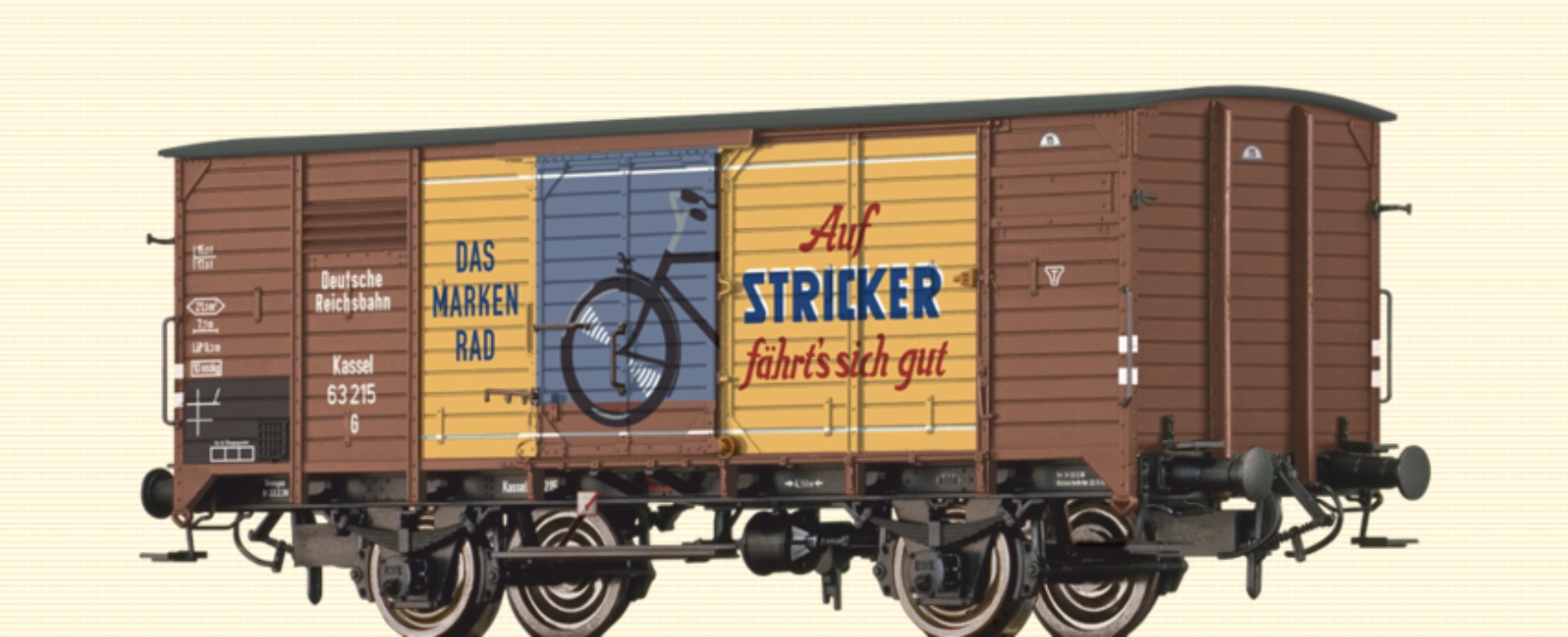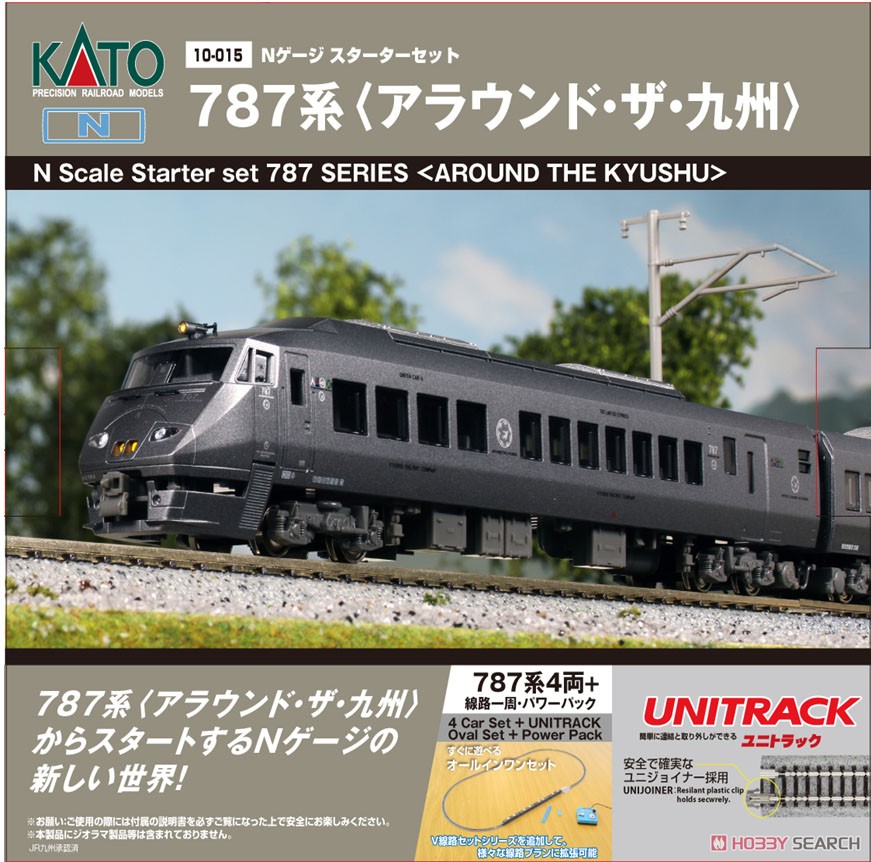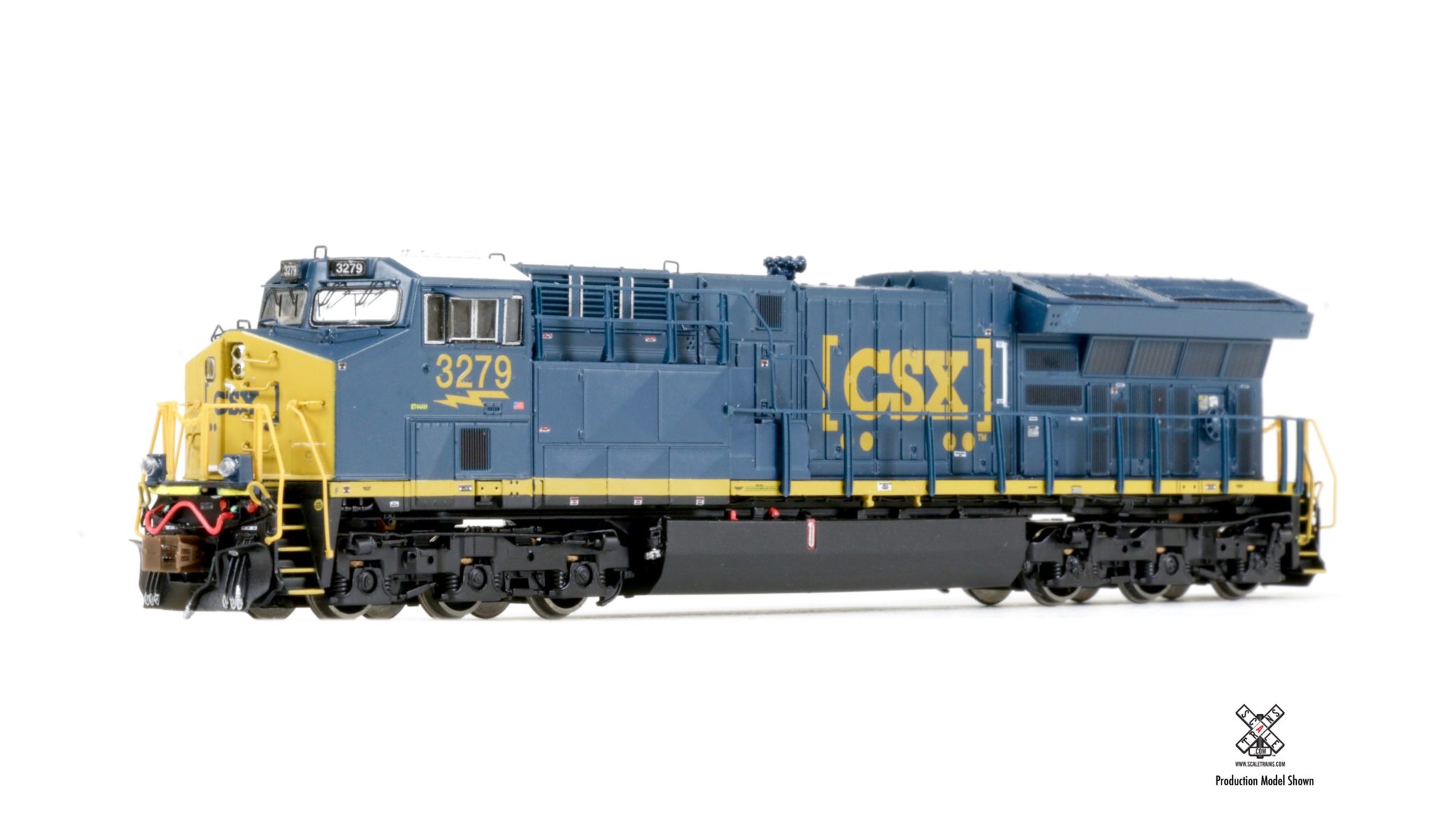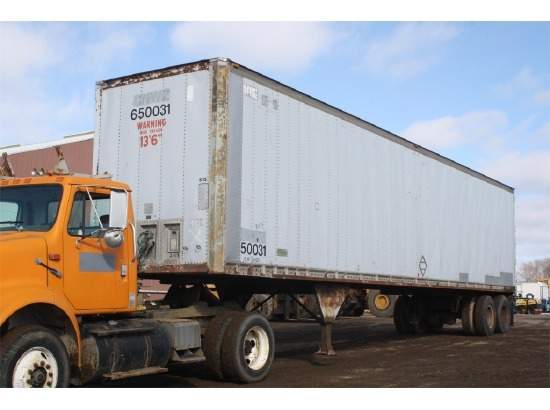Model Information: Pines 45 Foot Semi Box Trailer.
Prototype History: Pines Trailer produced a variety of semi box trailers. During the 1960s the 45 foot dry model was quite popular and many are still in service today.
Road Name History: Chicago Central & Pacific (reporting marks, CC) was one of the larger spin-offs of Illinois Central Gulf. In 1985, the new company acquired the entire Iowa Division of the ICG, stretching from Chicago west to Omaha and Sioux City (the lines diverge just west of Fort Dodge, Iowa) plus rolling stock for $75 million. Other branches off this main were also included. Total mileage is just under 800 making it a bit smaller than Maine Central in comparison.
Other than 17 former Milwaukee Road GP20s, 10 GP38s, 3 GP28s, and a quartet of switchers, the rest of the 114 unit diesel fleet was made up of former Illinois Central Gulf geeps (mostly units rebuilt at ICG's Paducah Shops.) For the first few years, typical lashups consisted of orange and white ICG units with the name painted out and the new CC green diamond logo applied to the nose and cab side, also orange and black former MILW units that received the same treatment. Ultimately, a new red paint scheme was adopted. If you removed the lettering from the long hood and painted it black instead of red, you would have Illinois Central's pre-1967 paint scheme. Ultimately, they dropped the "CHICAGO CENTRAL" from the long hood and replaced it with a larger "CC" instead. The green diamond inherited from Illinois Central with "Chicago" replacing "Illinois" remained however.
In one of life's little ironies, in 1996 the Illinois Central (they dropped the "Gulf" in 1988,) repurchased the Chicago Central & Pacific for twice what they had sold it for. Today, CC is a paper railroad owned by Grand Trunk Corporation who administers Canadian National's US holdings. There are many freshly painted Canadian National cars with "CC" reporting marks, and the line is operated as part of the greater Canadian National system.
Other than 17 former Milwaukee Road GP20s, 10 GP38s, 3 GP28s, and a quartet of switchers, the rest of the 114 unit diesel fleet was made up of former Illinois Central Gulf geeps (mostly units rebuilt at ICG's Paducah Shops.) For the first few years, typical lashups consisted of orange and white ICG units with the name painted out and the new CC green diamond logo applied to the nose and cab side, also orange and black former MILW units that received the same treatment. Ultimately, a new red paint scheme was adopted. If you removed the lettering from the long hood and painted it black instead of red, you would have Illinois Central's pre-1967 paint scheme. Ultimately, they dropped the "CHICAGO CENTRAL" from the long hood and replaced it with a larger "CC" instead. The green diamond inherited from Illinois Central with "Chicago" replacing "Illinois" remained however.
In one of life's little ironies, in 1996 the Illinois Central (they dropped the "Gulf" in 1988,) repurchased the Chicago Central & Pacific for twice what they had sold it for. Today, CC is a paper railroad owned by Grand Trunk Corporation who administers Canadian National's US holdings. There are many freshly painted Canadian National cars with "CC" reporting marks, and the line is operated as part of the greater Canadian National system.
Brand/Importer Information: In 1924 Stephan Schaffan, Sr. founded the Atlas Tool Company in Newark, New Jersey. In 1933 his son, Stephan Schaffan, Jr., came to work for his father at the age of sixteen. Steve Jr. built model airplanes as a hobby and frequented a local hobby shop. Being an enterprising young man, he would often ask the owner if there was anything he could do to earn some extra spending money. Tired of listening to his requests, the hobby-store owner threw some model railroad track parts his way and said, "Here, see if you can improve on this".
In those days, railroad modelers had to assemble and build everything from scratch. Steve Jr. created a "switch kit" which sold so well, that the entire family worked on them in the basement at night, while doing business as usual in the machine shop during the day.
Subsequently, Steve Jr. engineered the stapling of rail to fiber track, along with inventing the first practical rail joiner and pre-assembled turnouts and flexible track. All of these products, and more, helped to popularize model railroading and assisted in the creation of a mass-market hobby. The budding entrepreneur quickly outgrew the limitations of a basement and small garage operation. Realizing they could actually make a living selling track and related products, Steve and his father had the first factory built in Hillside, New Jersey at 413 Florence Avenue in 1947. On September 30, 1949, the Atlas Tool Company was officially incorporated as a New Jersey company.
In 1985, Steve was honored posthumously for his inventions by the Model Railroad Industry Association and was inducted into the Model Railroad Industry Hall of Fame in Baltimore, Maryland. In addition, Steve was nominated and entered into the National Model Railroad Association Pioneers of Model Railroading in 1995.
In the early 1990s, the Atlas Tool Company changed its name to Atlas Model Railroad Company, Inc.
In those days, railroad modelers had to assemble and build everything from scratch. Steve Jr. created a "switch kit" which sold so well, that the entire family worked on them in the basement at night, while doing business as usual in the machine shop during the day.
Subsequently, Steve Jr. engineered the stapling of rail to fiber track, along with inventing the first practical rail joiner and pre-assembled turnouts and flexible track. All of these products, and more, helped to popularize model railroading and assisted in the creation of a mass-market hobby. The budding entrepreneur quickly outgrew the limitations of a basement and small garage operation. Realizing they could actually make a living selling track and related products, Steve and his father had the first factory built in Hillside, New Jersey at 413 Florence Avenue in 1947. On September 30, 1949, the Atlas Tool Company was officially incorporated as a New Jersey company.
In 1985, Steve was honored posthumously for his inventions by the Model Railroad Industry Association and was inducted into the Model Railroad Industry Hall of Fame in Baltimore, Maryland. In addition, Steve was nominated and entered into the National Model Railroad Association Pioneers of Model Railroading in 1995.
In the early 1990s, the Atlas Tool Company changed its name to Atlas Model Railroad Company, Inc.
Item created by: nscalemodeler160 on 2016-04-20 15:05:45. Last edited by Alain LM on 2022-04-13 05:41:29
If you see errors or missing data in this entry, please feel free to log in and edit it. Anyone with a Gmail account can log in instantly.
If you see errors or missing data in this entry, please feel free to log in and edit it. Anyone with a Gmail account can log in instantly.


